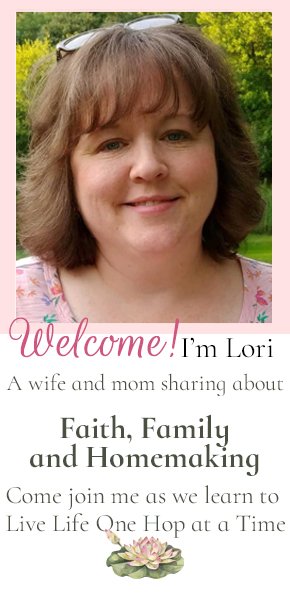Teaching History
/
History is a bore for many. When teaching it, you should show a love for things of the past.
When I was growing up, I seriously hated history. I learned the dates and names of people, places and wars just so I could make a good grade on tests and quizzes, but I never learned history. It was not until I was in the 10th grade when I was introduced to the world of World History by an amazing teacher. I remember the excitement about anything she taught and how she showed the class learning can be fun.

Fast forward twelve years ~ I was sitting in a workshop at the regional Christian School Teacher’s Convention. The speaker was Carolyn Hobbs better known as “Aunt Carolyn”. The workshop was entitled something along the lines as “How to Tell a Story and Keep Your Listeners”. In this workshop she told as a teacher, it is our responsibility to make a child want to learn. She went on and explained if you can tell a story, you can teach history. As Mrs. Hobbs spoke she explained, instead of reading word for word the textbook, study the information and bring to life and let the students see history as a story. I’ll never forget how she brought her story That Dog Spot to life in that auditorium. I was on the edge of my seat; I wanted to teach history like that. I wanted my students to be hanging on to my every word when it came to history.
Over the years, I was encouraged and discouraged by the administration in two schools when it came to this kind of teaching. While one leadership loved it and wanted the children to learn, the other disliked it and wanted the textbook read.
When I filled in as a 7th and 8th grade World History teacher a couple of years ago, I brought that kind of teaching to class. I remember a little fellow came up to me after class and said, “I don't like history, because we've always had to read the book. I can't believe how you teach it; I think I'm going to love it. I’ve never had a teacher be so excited about history.” That statement, I believe will stay with me for many years. When the new teacher came in and observed the class schedule, I was questioned why I didn’t read or have the students read word for word the textbook. I simply told her, history needs to be taught where children will want to learn it.
Here are a few things to consider when teaching History~
1. Know the subject: Don’t try to teach by the seat of your pants. It doesn't work; I’ll admit I have tried it and failed horribly. You have to have knowledge of what you are presenting; take the time to read up on the subject.
When I was growing up, I seriously hated history. I learned the dates and names of people, places and wars just so I could make a good grade on tests and quizzes, but I never learned history. It was not until I was in the 10th grade when I was introduced to the world of World History by an amazing teacher. I remember the excitement about anything she taught and how she showed the class learning can be fun.

After being in the same Christian school since kindergarten and never seeing that kind of excitement, I did not know how I was going to get over the initial shock of someone who really cared about what they taught. It didn't take long!
Fast forward twelve years ~ I was sitting in a workshop at the regional Christian School Teacher’s Convention. The speaker was Carolyn Hobbs better known as “Aunt Carolyn”. The workshop was entitled something along the lines as “How to Tell a Story and Keep Your Listeners”. In this workshop she told as a teacher, it is our responsibility to make a child want to learn. She went on and explained if you can tell a story, you can teach history. As Mrs. Hobbs spoke she explained, instead of reading word for word the textbook, study the information and bring to life and let the students see history as a story. I’ll never forget how she brought her story That Dog Spot to life in that auditorium. I was on the edge of my seat; I wanted to teach history like that. I wanted my students to be hanging on to my every word when it came to history.
Over the years, I was encouraged and discouraged by the administration in two schools when it came to this kind of teaching. While one leadership loved it and wanted the children to learn, the other disliked it and wanted the textbook read.
When I filled in as a 7th and 8th grade World History teacher a couple of years ago, I brought that kind of teaching to class. I remember a little fellow came up to me after class and said, “I don't like history, because we've always had to read the book. I can't believe how you teach it; I think I'm going to love it. I’ve never had a teacher be so excited about history.” That statement, I believe will stay with me for many years. When the new teacher came in and observed the class schedule, I was questioned why I didn’t read or have the students read word for word the textbook. I simply told her, history needs to be taught where children will want to learn it.
Here are a few things to consider when teaching History~
1. Know the subject: Don’t try to teach by the seat of your pants. It doesn't work; I’ll admit I have tried it and failed horribly. You have to have knowledge of what you are presenting; take the time to read up on the subject.
2. Don’t sugar coat history: Depending on the age, children need to know the good, the bad, and the ugly of history. The good thing about home education, a parent can build on what has been taught in the past years. Once a child is old enough/ mature enough to handle more of the truth, teach it.
3. History, History, History: History is about the past and if we are not reminded of it, then many of us may end up repeating it. Don’t water it down by mixing it with geography, economics, civics, and etc. Those are all good and need to be taught, but don’t leave out the history.
4. Textbooks vs. Living Books: This is where many will pause and scratch their heads. If you are like me and like the textbook route; don’t let it dictate what you teach. All history textbooks don’t cover everything; use the textbook as a spine and include more living books. Allow your children to spend time enjoying history.
5. Make it hands on: We learn with our eyes, ears, mouth and hands. Drilling over facts is good but let children run their finger along the river or mountain range on a map. Have them explore the shape of the continents, countries and states, show pictures of historical men, women and places. Bring this information to life.
6. Field trips: If you live near a historical site, visit it. Bring that area to life to your children by allowing them to see where Abraham Lincoln was shot, or where George Washington lived. Don’t forget about local history. Many people live near battlefields that may not be quite as famous as Gettysburg or Little Big Horn; visit them and learn what you can about the battle. You may live near local historical monuments or plantations, local history is just as important as national history.
3. History, History, History: History is about the past and if we are not reminded of it, then many of us may end up repeating it. Don’t water it down by mixing it with geography, economics, civics, and etc. Those are all good and need to be taught, but don’t leave out the history.
4. Textbooks vs. Living Books: This is where many will pause and scratch their heads. If you are like me and like the textbook route; don’t let it dictate what you teach. All history textbooks don’t cover everything; use the textbook as a spine and include more living books. Allow your children to spend time enjoying history.
5. Make it hands on: We learn with our eyes, ears, mouth and hands. Drilling over facts is good but let children run their finger along the river or mountain range on a map. Have them explore the shape of the continents, countries and states, show pictures of historical men, women and places. Bring this information to life.
6. Field trips: If you live near a historical site, visit it. Bring that area to life to your children by allowing them to see where Abraham Lincoln was shot, or where George Washington lived. Don’t forget about local history. Many people live near battlefields that may not be quite as famous as Gettysburg or Little Big Horn; visit them and learn what you can about the battle. You may live near local historical monuments or plantations, local history is just as important as national history.
Don't let the drudgery of our past history class be passed along to our children. Let them see history is fun and exciting!
Let him, on the contrary, linger pleasantly over the history of a single man, a short period, until he thinks the thoughts of that man, is at home in the ways of that period. Though he is reading and thinking of the lifetime of a single man, he is really getting intimately acquainted with the history of a whole nation for a whole age. ~ Charlotte Mason







